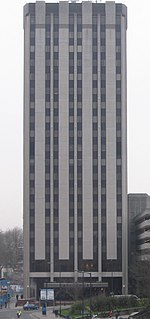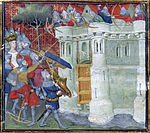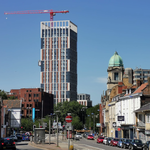Horfield United Reformed Church, Bristol
1753 establishments in England18th-century Methodist church buildingsBristol building and structure stubsChurches in BristolEnglish church stubs ... and 2 more
Religious organizations established in 1753United Reformed churches in England

Whitefield's Tabernacle, a church in Penn Street, Bristol, opened in 1753 for the followers of George Whitefield. It was replaced in 1957 by the Whitefield Memorial Tabernacle, in Muller Road, Horfield, Bristol, now the home of Horfield United Reformed Church. The work in Muller Road had started in 1930, but larger buildings were facilitated by compensation by Bristol City Council for the redevelopment of the site of the Penn Street church.
Excerpt from the Wikipedia article Horfield United Reformed Church, Bristol (License: CC BY-SA 3.0, Authors, Images).Horfield United Reformed Church, Bristol
Penn Street, Bristol Broadmead
Geographical coordinates (GPS) Address Nearby Places Show on map
Geographical coordinates (GPS)
| Latitude | Longitude |
|---|---|
| N 51.4576 ° | E -2.5863 ° |
Address
Hugo Boss
Penn Street
BS1 3BE Bristol, Broadmead
England, United Kingdom
Open on Google Maps










